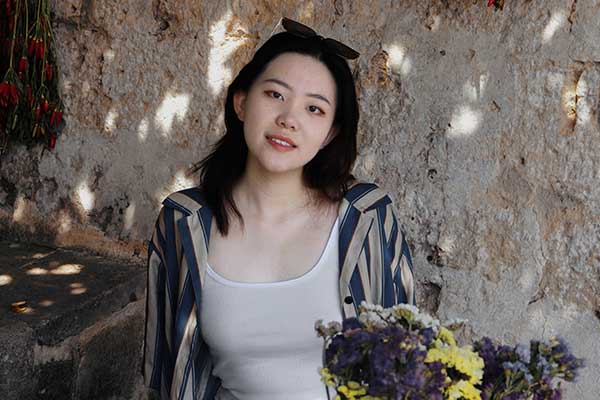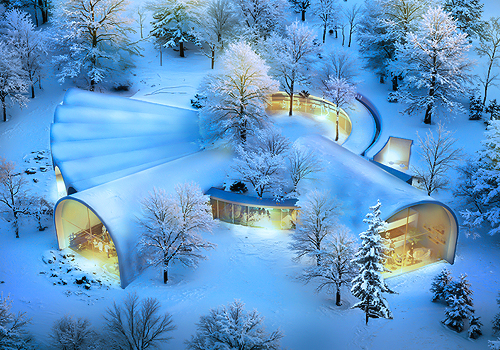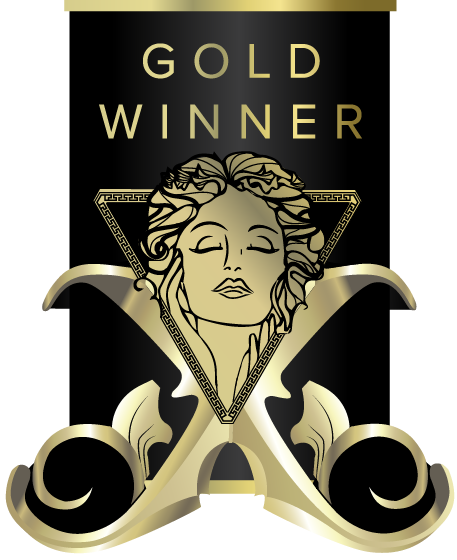
Interview
Yiyi Gao
1 Congratulations on winning the MUSE Design Awards! Can you introduce yourself and share about what inspired you to pursue design as a career?
I’m a multidisciplinary artist and architectural designer with a Bachelor of Fine Arts degree from the University of Michigan and a Master of Architecture degree from Columbia GSAPP. Having lived and worked in New Zealand, China, and the United States, I bring a cross-cultural perspective that blends art, architecture, and ecology. Design drew me in because it lets me merge storytelling with spatial experience, creating environments that connect people to one another and to the natural world.
2 What does being recognized in the MUSE Design Awards mean to you?
Being recognized by the MUSE Design Awards is an incredible honor. To be selected from more than 13,000 global submissions and evaluated by professional juries across 30 countries affirms that my work resonates beyond borders. It’s gratifying to share a platform with such a diverse group of accomplished creatives and to know the projects will reach a wide, international audience.
3 How has this achievement impacted your career, team, or agency, and what opportunities has it brought so far?
This award has amplified my voice on an international stage. MUSE is a respected global platform, and the recognition has already sparked new conversations, invitations to speak, and opportunities to collaborate — opening doors to projects that align with my interest in socially and environmentally responsive design.
4 What role does experimentation play in your creative process? Can you share an example?
Experimentation is at the core of my practice. I’m always testing new materials, forms, and methods of representation. Earthward — a hospice and ceramic-therapy center in a historic pottery town — embodies this spirit. I explored how architecture can express the circle of life, from birth to death, through space and form. The project integrates a sunken ceramics archive, a contemplative courtyard, and kiln-inspired structures to honor both the life cycle and the craft of clay. Its conceptual experimentation and material exploration give it a symbolic presence while remaining welcoming and functional.
5 What's the most unusual source of inspiration you've ever drawn from for a project?
For The Word for World Is Forest, I found inspiration in the aerial roots of rubber fig trees. Their layered, living structures suggested an architecture that could grow with its environment. I envisioned a speculative community where architecture behaves as a living organism—self-renewing and regenerative rather than extractive. This idea reflects my belief that design can coexist with natural ecosystems.
6 What’s one thing you wish more people understood about the design process?
I wish more people understood that design is not only problem-solving but also questioning the status quo. Every new project carries social, environmental, and cultural implications, and designers need to approach the work they bring into this world with that critical lens.
7 How do you navigate the balance between meeting client expectations and staying true to your ideas?
Clients bring important questions, but I see my role as expanding the dialogue—adding new questions of my own. By reframing the brief, I can create opportunities for the project’s deeper vision while meeting practical expectations.
8 What were the challenges you faced while working on your award-winning design, and how did you overcome them?
The greatest challenge in my award-winning work, Earthward, was balancing conceptual ambition with user needs. Earthward is a hospice and ceramic-therapy center in a historic pottery town. I aimed for a design that felt both poetic and highly functional—serving end-of-life visitors, their families, and friends—without sacrificing the symbolic and spatial depth that defines the project.
9 How do you recharge your creativity when you hit a creative block?
When I face a creative block, I return to nature. It doesn’t have to be a long hike outdoors—sometimes simply watering my plants or observing shifting light resets my senses and restores perspective.
10 What personal values or experiences do you infuse into your designs?
A profound connection to nature underpins all of my work. From material choices and the modulation of light to the way a space frames climate and sound, I aim to evoke an intimate dialogue between the user and the environment.
11 What is an advice that you would you give to aspiring designers aiming for success?
My advice to aspiring designers is simple: go for it. Follow your curiosity, experiment boldly, and don’t be afraid of detours on this winding journey—they often lead to the most meaningful discoveries.
12 If you could collaborate with any designer, past or present, who would it be and why?
I would love to collaborate with the Italian-born Brazilian architect Lina Bo Bardi. Her ability to navigate a new country, confront challenges as a female architect, and create work that is both socially grounded and formally inventive continues to inspire me.
13 What's one question you wish people would ask you about your work, and what's your answer?
A question I wish people asked is, “Do you want your work to be timeless and last forever?” My answer is no. I embrace impermanence, evolution, and the natural decay of a built environment, allowing spaces to change with the people and landscapes they serve over time.

